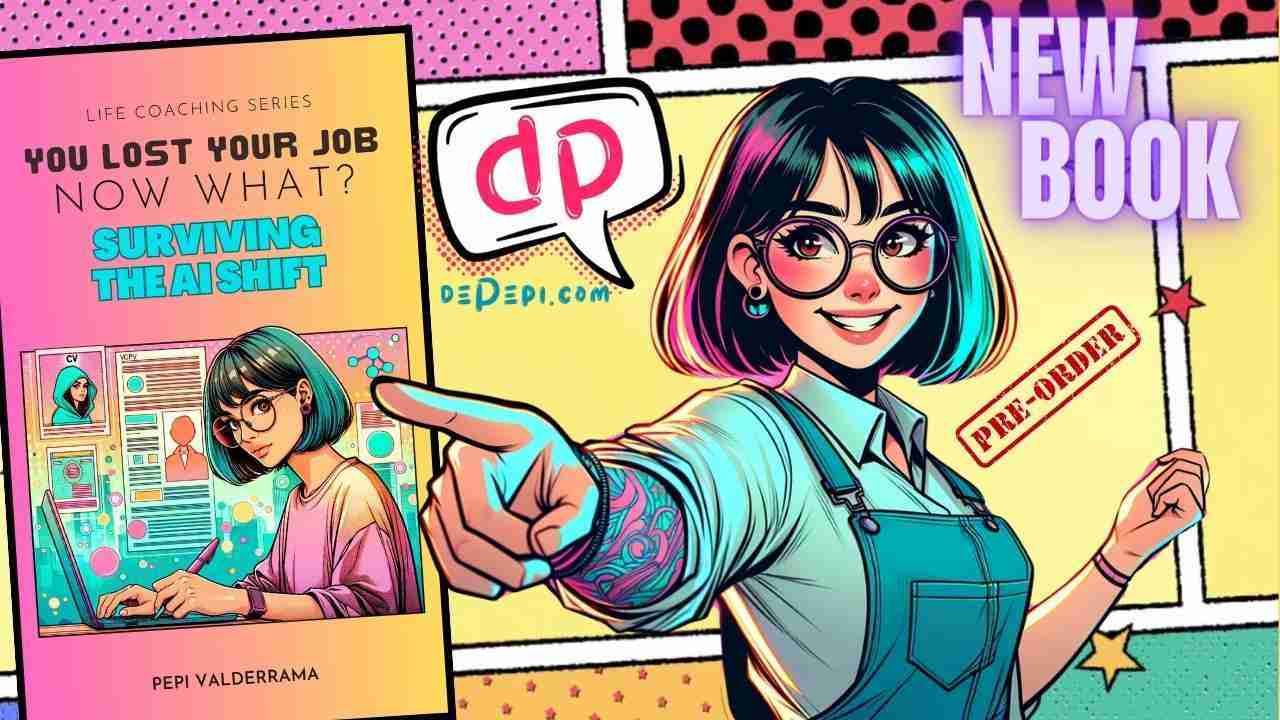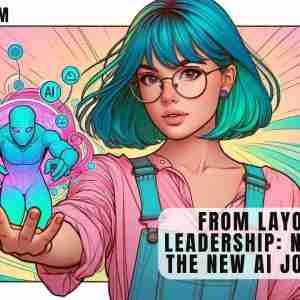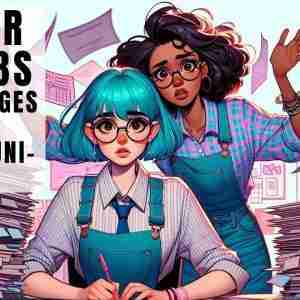The Dual Faces of AI: Job Destruction And Creation Explained

AI has many faces. All of them are drastically changing the global job market, sparking debates on whether it heralds an era of unprecedented unemployment or paves the way for innovative job creation. Is it a creating force, a destroying force, or both? What does it mean for professionals across various sectors? How can you change your fate if you’re affected? (Hint: “You Lost Your Job. Now What? Surviving the AI Shift“)
The Disruptive Faces of AI
Recent developments have underscored AI’s capacity to replace human roles, particularly in sectors like customer service. For instance, Klarna’s implementation of AI to perform tasks equivalent to 700 customer service jobs exemplifies the direct impact AI can have on employment. This is not an isolated event; companies across various industries are exploring similar avenues, reducing their reliance on human labour in favour of AI-driven solutions.
This transition isn’t limited to routine tasks. Advanced technologies, such as Liquid Neural Networks, are exploring domains traditionally believed to require human intuition and expertise, like surgery. Although AI may not fully replace human surgeons anytime soon, its growing involvement in complex fields signals a profound transformation in the job landscape.
However, the AI shift is a double-edged sword. While certain jobs face extinction, new opportunities emerge, particularly in AI development, cybersecurity, and creative industries. AI’s role in enhancing productivity, from generating novel artistic expressions to bolstering cybersecurity defences, cannot be understated. It creates a paradox where AI both eliminates and necessitates human expertise.
The Displacing Faces of AI
The displacement caused by AI is not uniform across sectors. Manual and repetitive tasks are most at risk, while jobs requiring creativity, empathy, and complex problem-solving stand firmer against the AI tide. Nonetheless, industries slow to adopt AI, like agriculture and mining, are not immune; they merely face a delayed impact. The challenge lies in preparing the workforce for these inevitable changes.
The evolution also introduces a shift in job requirements. As AI takes over mundane tasks, the value of human skills like critical thinking, emotional intelligence, and creative problem-solving increases. The workforce must adapt by acquiring new skills and embracing continuous learning to remain relevant in an AI-driven world.
Navigating the AI Shift
Understanding AI’s impact is crucial, but navigating this shift proactively is imperative. Workers must use AI to enhance their productivity and creativity rather than viewing it as a mere threat. For example, AI can aid in crafting compelling resumes or developing unique artistic projects, which can open doors to new career paths. You can discover how using “You Lost Your Job. Now What? Surviving the AI Shift” and learn prompting while changing your fate.
Education and training are key to empowering individuals to harness AI positively. By focusing on STEM fields and other AI-relevant disciplines, professionals can prepare themselves for the evolving job market. Moreover, soft skills, such as adaptability and communication, become more crucial as they complement the technical capabilities provided by AI.
The Role of Policymakers and Business Leaders
The many faces of AI require diverse approaches. The transition to an AI-centric job market requires concerted efforts from all societal sectors. Policymakers, educators, and business leaders must collaborate to create an ecosystem that supports continuous learning, innovation, and fair employment practices. Investments in education and infrastructure are essential, along with policies that mitigate the adverse effects of job displacement and income inequality.
Looking Ahead
As AI reshapes the employment landscape, individuals must adopt a proactive approach to their careers. “You Lost Your Job. Now What? Surviving the AI Shift” offers valuable guidance for those affected by these changes. It provides strategies for using AI in one’s favour, from enhancing resumes with AI tools to embracing lifelong learning and adaptability.
The future may be uncertain, but with the right mindset and preparation, professionals can successfully navigate the AI shift. By understanding the dynamics of AI’s impact on jobs and proactively adapting to these changes, individuals can not only survive but thrive in the evolving job market.
Can’t wait? Get Enhance Your Resume With AI—The Guide now. It’s packed with prompting techniques and examples, best practices, and more!






